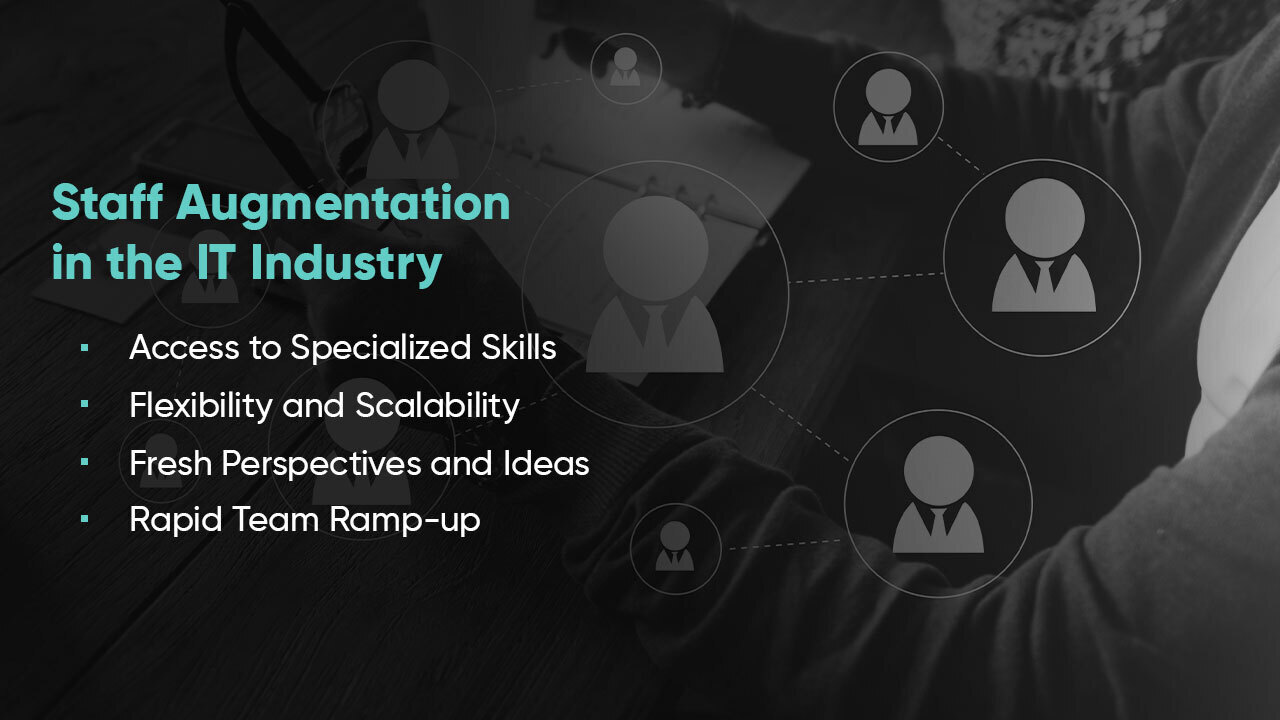Staff Augmentation Challenges
IT staff augmentation comes with its own set of challenges. In this section, we will explore the top 10 challenges faced by businesses when implementing staff augmentation and provide practical solutions for overcoming them.
1. Finding the Right Talent
Finding qualified IT professionals with the specific skill sets and expertise required for a project can be a daunting task. With the increasing demand for specialized roles such as data scientists, AI engineers, and cybersecurity experts, competition for top talent is fierce. In addition, the shortage of skilled professionals in certain geographic regions further exacerbates this challenge. To overcome this hurdle, companies must adopt proactive strategies such as partnering with reputable IT staffing agencies, leveraging global talent pools, and investing in employer branding initiatives to attract top talent.
2. Poor Communication & Management
Effective communication and project management are critical for the success of any IT staff augmentation initiative. However, coordinating remote teams, managing disparate time zones, and overcoming language barriers can pose significant challenges. Poor communication can lead to misunderstandings, delays in project delivery, and ultimately project failure. To address this challenge, organizations must establish clear communication channels, implement project management tools and collaboration platforms, and foster a culture of transparency and accountability among team members.
3. Scalability
Scalability is another key challenge faced by companies engaging in IT staff augmentation. Balancing the need to scale resources up or down based on project requirements while ensuring continuity and stability can be complex. Moreover, the time and effort required to onboard new team members and integrate them into existing workflows can impact project timelines and deliverables. To overcome this challenge, companies should anticipate future project needs, partner with IT staffing providers with a wide network of talent, and agree on reasonable notice periods for scaling up or down the team.
4. Time Zone Availability
Working with remote teams across different time zones can present significant communication and coordination challenges. Misaligned work hours can lead to delays in response times, hinder real-time collaboration, and impact overall productivity. To mitigate this challenge, organizations should utilize time management tools to bridge communication gaps, opt for IT staffing providers with global offices for better coverage, and establish overlapping work hours to facilitate effective collaboration and communication among team members.
5. Legal Issues
Navigating the legal complexities associated with IT staff augmentation contracts can pose significant challenges for businesses. Crafting comprehensive contracts that clearly define roles, responsibilities, and deliverables while ensuring compliance with local regulations and data protection laws is essential. Moreover, addressing issues such as intellectual property rights, non-disclosure agreements (NDAs), and liability clauses requires careful consideration and legal expertise. To overcome this challenge, companies should engage legal counsel with experience in IT staff augmentation contracts, conduct thorough due diligence on potential partners, and ensure that contracts are drafted with the best interests of all parties in mind.
6. Security Risks
One of the critical challenges of IT staff augmentation is managing security risks. Integrating external team members into internal processes can expose the organization to potential security breaches and data leaks. To mitigate these risks, companies must conduct thorough background checks and security screenings for augmented staff. Implementing robust cybersecurity measures, such as secure access protocols and data encryption, is essential. Additionally, providing comprehensive training on data security best practices can help ensure that all team members are aware of their roles and responsibilities in maintaining a secure working environment.
7. Transferring Project Knowledge
Effective knowledge transfer is crucial for the success of any IT project, but it can be challenging when working with augmented teams. Inconsistent or inadequate knowledge transfer practices can lead to misunderstandings, delays, and quality issues. To address this challenge, companies should develop a systematic approach to knowledge sharing and documentation. Assigning dedicated resources for facilitating knowledge transfer sessions and using tools and platforms for centralized knowledge management can help ensure that critical project information is communicated effectively to all team members.
8.Quality Assurance
Maintaining quality standards is another significant challenge in IT staff augmentation. Ensuring that augmented team members adhere to the same quality standards as internal staff can be difficult, especially when working remotely or across different time zones. To address this challenge, companies should define clear quality standards and performance metrics for all team members. Regular code reviews, testing, and peer evaluations can help maintain these standards. Additionally, investing in training and upskilling programs can help ensure that augmented team members have the necessary skills to meet quality requirements.
9. Cultural Compatibility
Cultural compatibility can be a significant challenge when working with augmented teams from different backgrounds and cultures. Misunderstandings and communication barriers can arise, leading to inefficiencies and project delays. To overcome this challenge, companies should foster a culture of inclusivity and diversity within their teams. Providing cultural sensitivity training and awareness programs can help team members understand and respect each other’s cultural differences. Encouraging open communication and mutual respect among team members can also help build a positive team culture.
10. Cost Management
Cost management is a critical challenge for companies engaging in IT staff augmentation. While staff augmentation can provide cost-effective solutions for accessing specialized skills and expertise, it can also lead to unexpected expenses if not managed properly. To address this challenge, companies should conduct a thorough cost-benefit analysis before engaging in staff augmentation. Exploring flexible pricing models and payment structures can help optimize costs. Additionally, monitoring project expenses closely and identifying areas for optimization can help ensure that the benefits of staff augmentation outweigh the costs.


